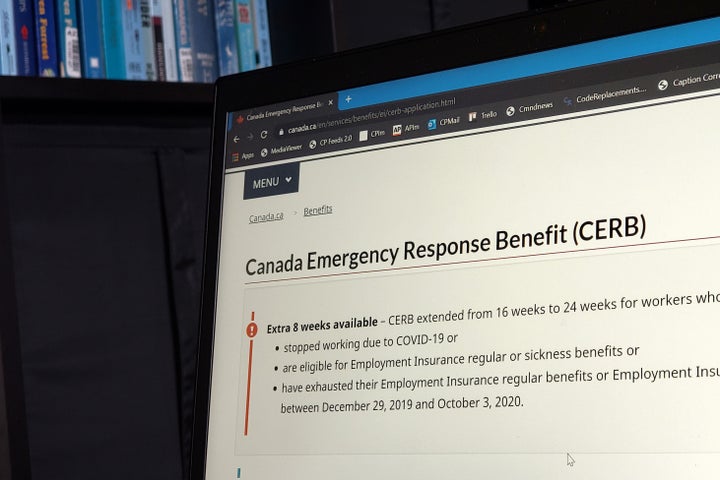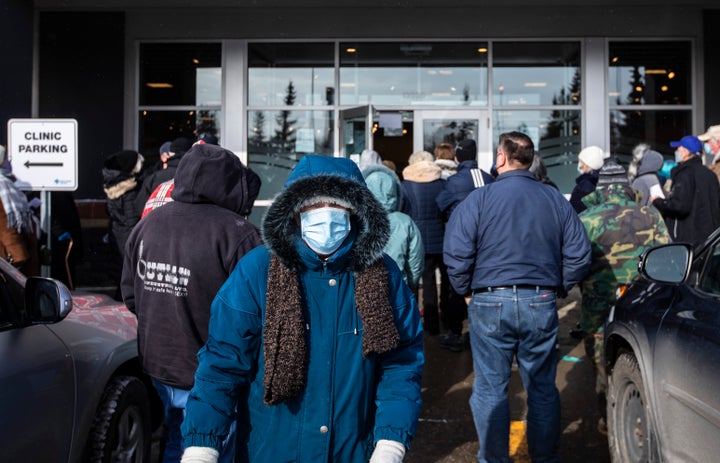
OTTAWA — A new Statistics Canada report Monday says the value of COVID-19-related support measures exceeded many Canadians’ loss in income, and put approximately $2,500 in extra cash into the pockets of middle-income households.
Middle-income households averaged just over $71,000 in earnings in the year before the pandemic. Statisticians used 2019 data to forecast household well-being for the first three quarters of 2020, finding the pandemic and the related income support led to some “extraordinary changes.”
The gap between the lowest and highest-income households in Canada narrowed. Data suggests age was another indicator of how households fared.
“On average, young and middle-aged households gained around $3,000 more through COVID-19 support measures than they lost in wages and salaries and self-employment income in the second quarter,” the report read.
Watch: Prime minister says CERB recipients who got warning letters from CRA shouldn’t be anxious. Story continues below video.
Another change is how COVID-19-related emergency benefits comprised 16.4 per cent of disposable income for lower-income households and 11.3 per cent for younger people.
On the other side of the spectrum, emergency benefits to higher income earners and the country’s oldest households was 4.3 per cent and 4.2 per cent of disposable income, respectively.
Parisa Mahboubi, a senior policy analyst with the C.D. Howe Institute, said it’s important to keep in mind that any increase to income in these circumstances is temporary.
Lower-income individuals tend to spend more of their earnings on goods and services.
“A higher proportion of their income has been spent on goods and services, which helps the economy because it boosts total consumption, it boosts aggregate demand, and through that it’s going to help the economy recover more quickly,” Mahboubi told HuffPost Canada.
It has been nearly a year since the federal government announced the Canada Emergency Response Benefit (CERB), a taxable $2,000 monthly benefit to help people who suddenly found themselves out of work or with decreased hours or wages due to COVID-19.
Statistics Canada said mixed-income households, where part of earnings were earned through self-employment, experienced income decline 31.9 per cent compared to the previous year.
Prospects started to turn around later in the year as economies partially reopened and some COVID-19-related restrictions were relaxed, and people picked up work as some temporary benefits were wound down.
“The same households that saw the biggest declines in self-employment income in the first two quarters recorded the largest gains in the third quarter,” read Monday’s report.

Between March 15 and Oct. 3, the federal government paid out more than $81.6 billion in CERB benefits to 8.9 million people. The money was delivered through the Canada Revenue Agency and the Employment Insurance system.
Mahboubi said CERB was a supportive program and enabled people to stay home when public health officials were concerned about dynamic infection rates and a strained health care system.
The third-quarter gains confirm and support the criticism of the program, she said, referencing arguments raised by some people, including Conservatives, that the eligibility criteria of CERB “discouraged individuals to look for employment because it had no feature to support going back to work.”
The economy took a nosedive last March after public health officials introduced social-distancing measures to curb transmissions of the contagious COVID-19.
Those measures forced industries and businesses to adapt to challenges including reduced retail operations, low tourism, and higher hospitality and restaurant costs as a result of people staying at home.
To soften the impact of widespread financial disruption, federal and provincial governments have introduced at least 849 combined measures, totalling $600 billion, in response to the pandemic, according to a January report published by the Canadian Centre for Policy Alternatives.